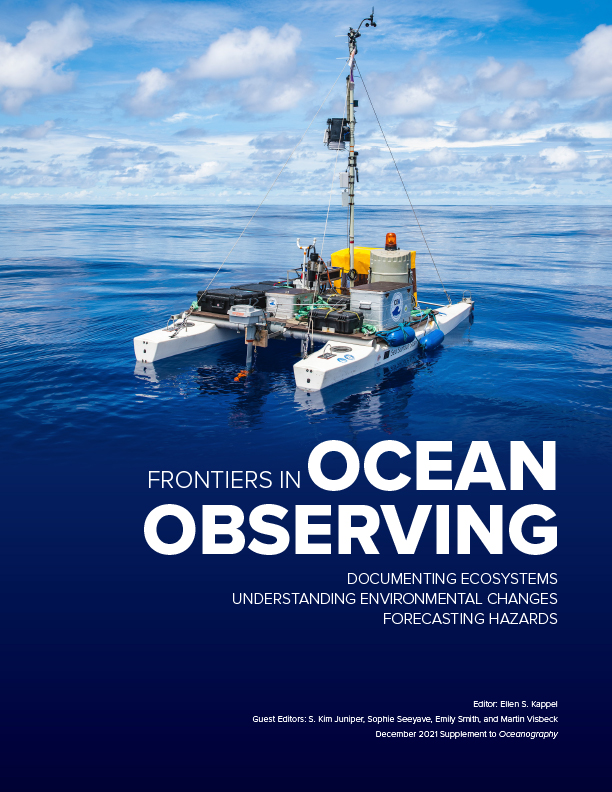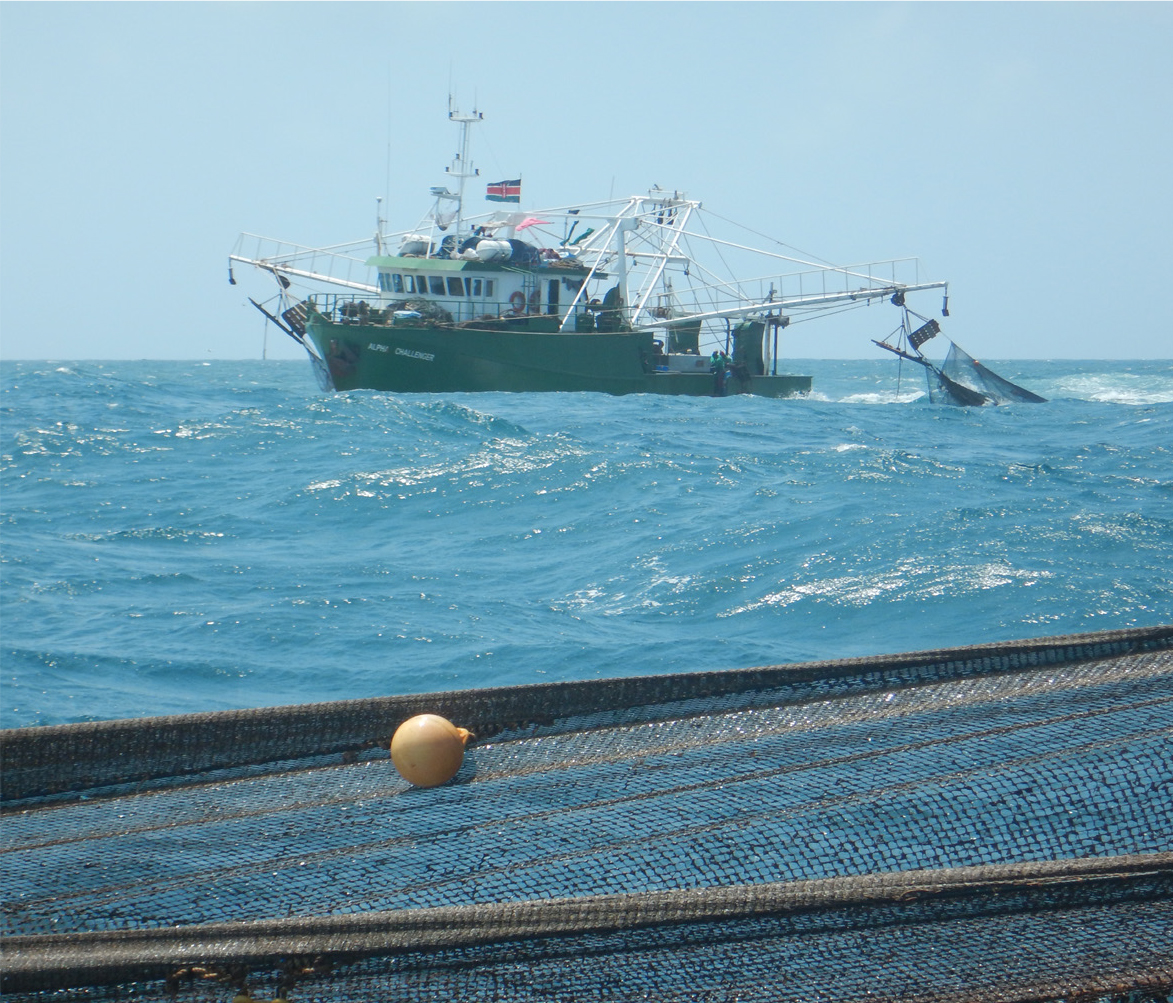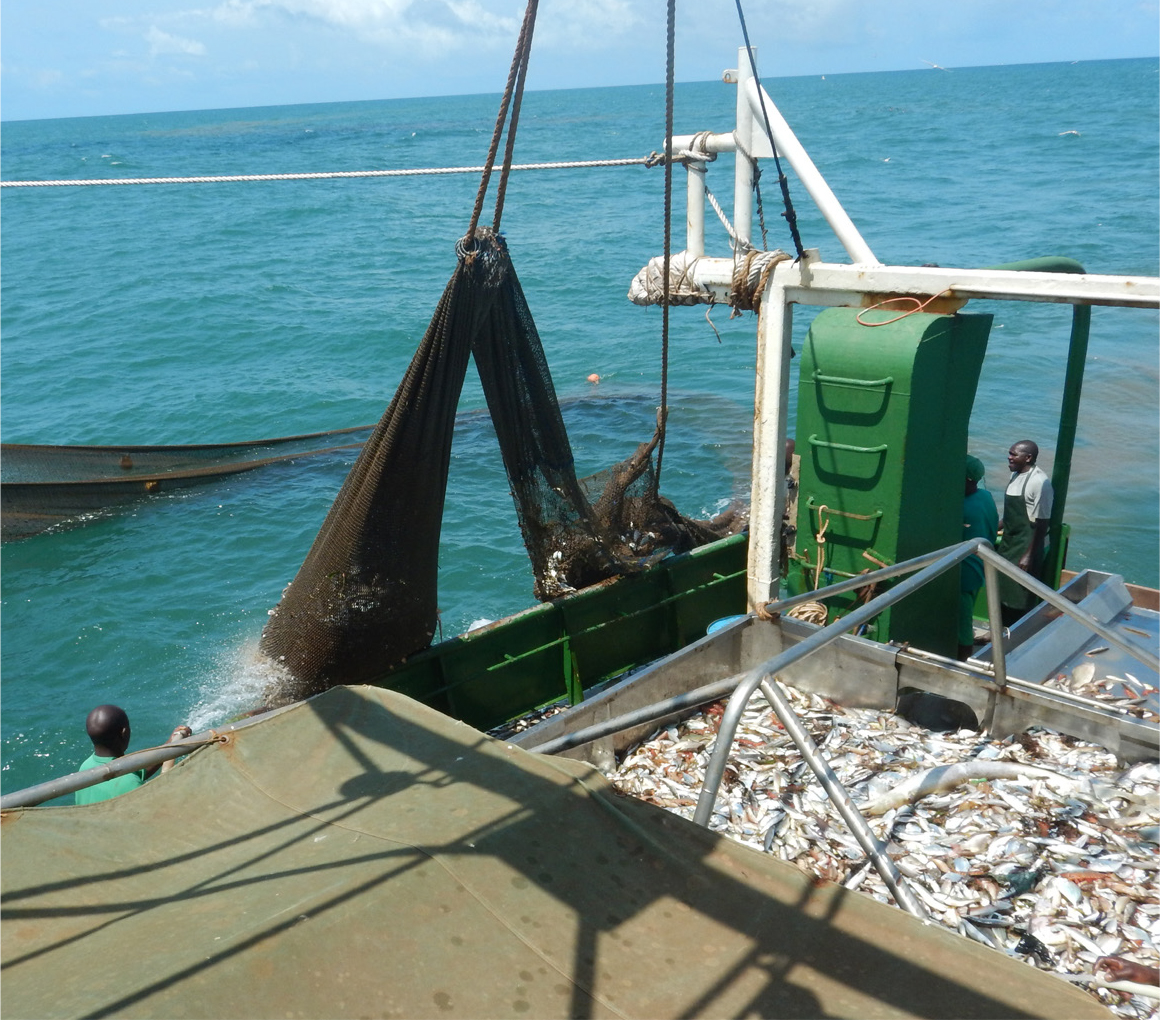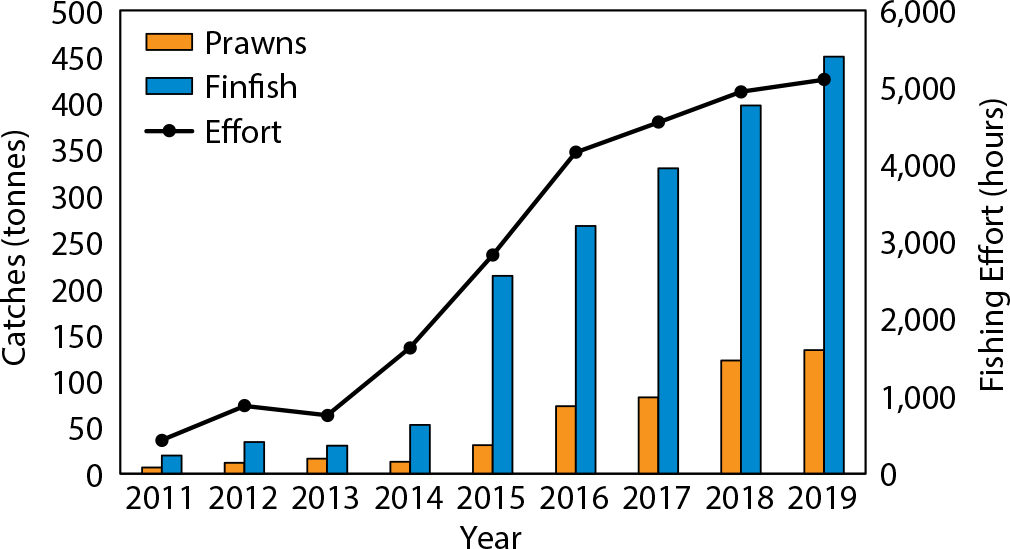Full Text
Industrial shallow-water prawn trawling in Malindi-Ungwana Bay, located along the north coast of Kenya (Figures 1 and 2), began in the 1970s after exploratory fishing surveys identified the existence of fishable penaeid prawn stocks (Iversen, 1984). Small-scale fishers were also targeting the prawn resources in the bay. As trawlers fishing close to the shore destroyed nearshore habitats and the gear of small-scale fishers, resource-use conflicts arose between the trawler companies and small-scale fishers.
|
|
|
|
To reduce these conflicts, in 1991, Kenya Fisheries Act Chapter 378 limited prawn trawling to beyond 5 NM from shore, with no industrial trawling allowed within a 0–3 NM zone. In 2010, a Prawn Fishery Management Plan recommended that trawling vessels carry a fisheries observer. However, it was not until this became a requirement in Article 147 of the 2016 Fisheries Management and Development Act that Kenya Fisheries Service (KeFS) observers began to work aboard trawlers; this article also expanded the observer program to cover all other commercial fishing operations such as longliners, purse seiners, and deepwater trawlers. The observer program provides data and information on fish catches and their composition, on the fate of target and non-target species, and on the fishing effort to enable evaluation of the status of the fishery and to inform reviews of the regulations in management plans.
In this study, we analyzed the species composition of retained and discarded catches from 2016 to 2019 (using data collected by observers) and trawl catches between 2011 and 2019 (with fishing vessel log data provided by the trawl industry).
The first KeFS-trained scientific observers were deployed in 2016 on four Kenyan-flagged industrial trawlers licensed to fish in the Malindi-Ungwana Bay during the prawn fishing season. They observed and recorded operations between April 1 and October 31 every year from 2016 to 2019 (Figure 1) aboard trawlers that were fitted with double rigged nets of 55–60 mm and 40–45 mm at the funnel and cod ends, respectively.
Thirty-seven observer trips were executed for 168 days between 2016 and 2019 and recorded 1,371 out of 8,531 hauls. The catch composition data collected by the observers followed sampling protocols adopted from Athayde (2012). The catch from each haul was emptied onto a steel sorting table on the deck, and large live animals (mainly sharks, rays, and turtles) were quickly returned to the sea to optimize their chances of survival (Figure 3). Prawns were then collected, graded, cleaned, treated, and placed into 2 kg cartons and blast frozen. The fish were sorted into retained and discarded catch. The captain kept a record of the fishing operation and the catch for each haul, and a report was sent to KeFS.
|
|
The industry data from 2011 to 2019 obtained from KeFS consisted of details of each fishing event, including start and end times and the GPS positions of each haul, and catch weights for prawns, octopus, squids, cuttlefish, lobsters, crabs, and others. Nothing at the species level was indicated. Results show a 20-fold increase in annual catches from 20 tons in 2011 to 450 tons in 2019, with a 10-fold increase in fishing effort from 437 hrs in 2011 to 5,102 hrs in 2019 (Figure 4). The catch rate for prawns varied from 8 kg/hr to 26 kg/hr. The catch rate for finfish was higher than that for prawns, ranging between 32 kg/hr and 88 kg/hr. Although the volume of discards (i.e., bycatch thrown back into the ocean, whether alive or dead, including live turtles and small, non-marketable fishes) remained high, there was a marked increase in the proportion of retained catch (prawns and finfish that were sold) over these years. The target prawn-to-bycatch ratio ranged from 1:3 to 1:9 during the four years. On average, 16% of the catch comprised target, with 59% retained and 25% discarded. The number of species identified by observers was 208 (2016), 265 (2017), 208 (2018), and 295 (2019). Multivariate analyses revealed that the species composition of retained and discarded catch differed from 2016 to 2019, and there was a significant change in the composition of retained species over the years of this study, with Penaeus indicus (Indian prawn), Otolithes ruber (tigertooth croaker), and Panulirus homarus (scalloped spiny lobster) contributing to the differences.
|
|
This study provides a preliminary evaluation of the data collected from the Malindi-Ungwana Bay shallow-water prawn trawl fishery. The changes in prawn-to-bycatch ratio over the study period may be attributed to changes in fishing operations in accordance with the regulations. Observed variation in species composition may be attributed to the effects of trawling on the ecosystem. Observers provide reliable data on catches at species level and on vessel operations that were not previously available. Observations of industrial shallow-water prawn trawling provide important basic information for guiding the review of the management plan to incorporate aspects of an ecosystems approach to fisheries management. Although the frequency of observer deployments on industrial vessels was affected by the COVID-19 pandemic, efforts have been made to resume operations by establishing boarding guidelines.





